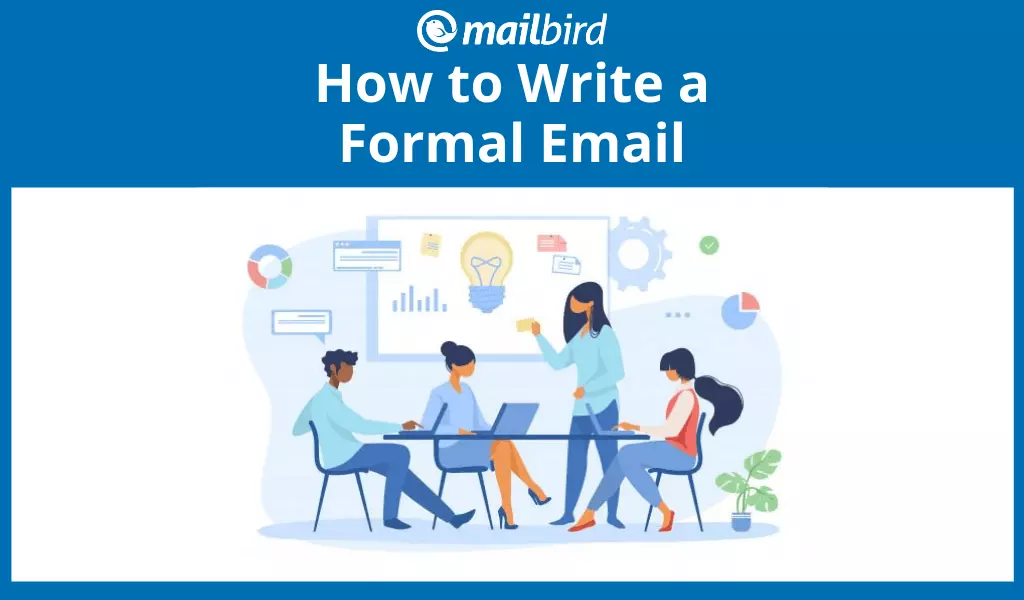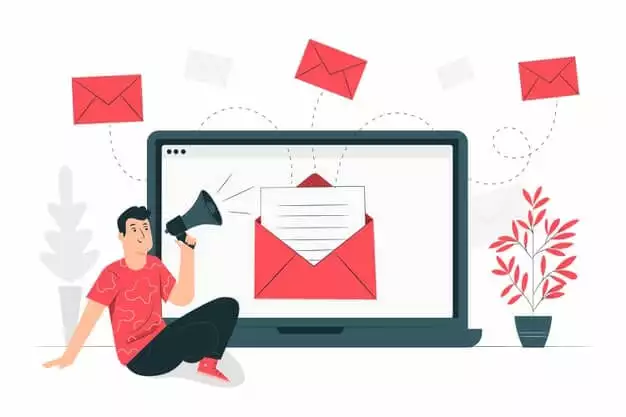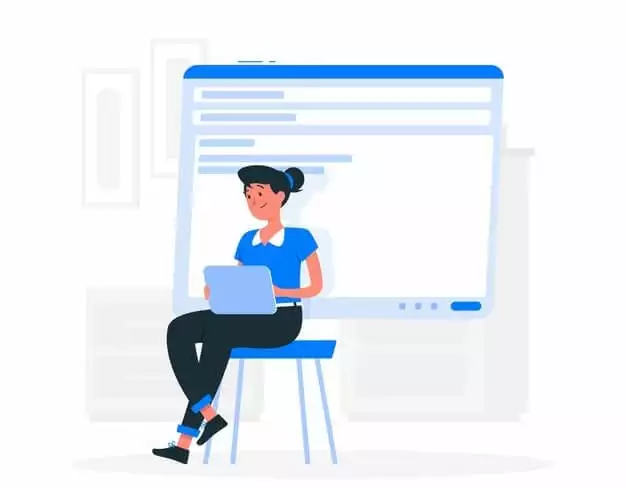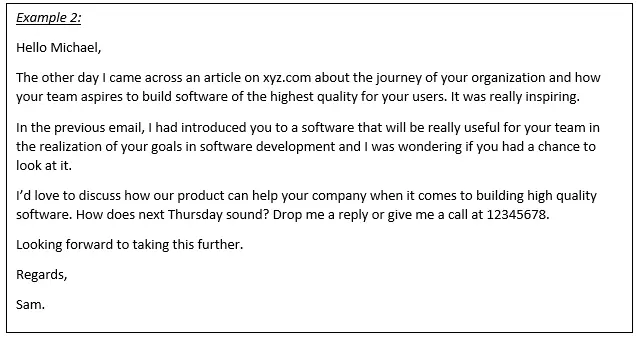Benefits of Formal Email For Your Business

In this article, we are going to show you how to write a formal email that benefits your reputation and your business.
While 86 percent of professionals and 73 percent of consumers say they prefer email communication, about 20 percent of all emails never reach the inbox. Out of those that do, the average open rate is between 15 and 20 percent.
You can boost your email open rates and click-through rates and ensure your message has a positive impact on your business by using a formal email address and a proper email structure.
Keep reading to learn more!
Email Use Statistics
- There are 5.5 billion email accounts worldwide.
- There are 3.9 billion email users.
- Over 306.4 billion emails are sent and received on a daily basis.
- The average person sends and receives 71 emails per day as regular business communication.
- 54 percent of B2B emails contain marketing messages.
- 99 percent of users check their emails daily, and 66 percent of them make purchases through email.
- The average click-through rate of B2B marketing emails is 4 percent.
- The list goes on, but you get the idea!
And once again, 73 percent of consumers prefer email communication, which is more than understandable in an era of instant messaging. Now, imagine having the possibility of reaching just a small percentage of those potential clients and consumers and how much that would grow your business and recognition on the market. Imagine getting in touch by using a generic, unprofessional email address. Would anyone even open that mail?
How a Formal Email Address Would Benefit Your Business

If you're sending out promotional offers and newsletters or launching a marketing email campaign, your email address will be the first thing to make an impression on the recipients, so you should make sure it's a good one. A formal email address increases your credibility.
Here are some of the benefits of using a professional email address:
- Customers and clients will perceive your business as a serious company.
- Customers are more likely to remember your email and brand when you use a professional email address.
- The only business you're promoting is yours.
Today, it's almost impossible for a startup to be competitive in the market without a strong online presence. It's important to have a corporate, presentable email address that you will use to develop a high-quality marketing and management strategy and achieve your long-term goals.
The email address itself is an integral part of your company's image because it shows your future customers the level of professionalism they can expect. For example, a professional email address is a key ingredient in launching a successful email marketing campaign or trying to build a brand and make the company easily recognizable on the market.
To manage your new address properly, use a supported email client that can save you and your team time and money. Mailbird is continuously updated, and its integration features provide everything you need right at your fingertips in one elegant dashboard.
How to Create a Formal Email Address
Creating a formal email address is relatively straightforward and simple. You need a domain name that is brief and corresponds to the name of your company, then find the right provider. The most popular providers on the market are:
- Google G Suite
- Microsoft Outlook
- iCloud
- Yahoo Mail
- AOL Mail
- Zoho Mail
- GMX Mail
- Yandex Mail
- Mail.com
- Lycos Mail
All of these offer a free version; however, if you want the premium features, they usually require having a monthly subscription. For example, the basic business packages for Google Workplace and Microsoft Outlook cost starting at $6 per month.
How to Write a Formal Email: Elements and Advice on Composing Formal Emails

In this section, let's focus on learning how to write professional emails and the elementary principles of email etiquette.
What Is the Difference between Formal and Casual?
When you need to send a business email or reach out to someone you don't know well, you will need to write a formal email. The casual style you might be used to when writing to your friends and family will not work well for business correspondence.
We have mentioned that about 20 percent of all emails never reach the recipient's inbox. Out of those that do, only about 22 percent get open. The main reasons emails don't get delivered or read are spammy subject lines and suspicious email addresses. Using a formal email address and carefully crafting your emails will help bypass the spam filters.
Sender
Receiving a message from an informal email address is a red flag for most email users.
When you send an important email from addresses such as D0gL0ver64$@example.com, or MikeTheGreat88@example.com, the message is more than likely to be deleted and future communication blocked. Unless, of course, you're sending it to a friend or family member.
When sending a formal email, you should use a formal email address that includes your full name, such as:
- JohnJonson@example.com
- John.Jonson@example.com
- John_Jonson@example.com
If you are writing on behalf of an institution or a business, it's best to use the email provided by the organization, e.g., JohnJonson@johnsonconsulting.com. If you have used your personal email or unofficial email address than you should learn how to unsend the email before the receiver reads it.
Structure and tone
The most significant difference between formal and casual emails is the structure. When you're writing an informal email, you don't have to worry too much about structure and tone.
For example, a casual email to your friend can look something like this:

With formal emails, the structure is clearly defined and should always be followed. Formal emails start with a salutation, have an opening sentence, body of the email, and the signature section. You should also be mindful of the tone.
Formal emails should not contain informal language, abbreviations, contractions, slang, and emoticons. Note that multiple fonts, especially script fonts, novelty fonts, and handwriting fonts, are not appropriate for a formal email.
The best options for formal emails include common, easily-readable fonts:
- Times New Roman
- Arial
- Calibri
- Verdana
- Georgia
- Helvetica
Using proper grammar in formal emails is vital. The goal is for the reader to understand your message and take action. To achieve this, correct any spelling errors, check grammar and proper names, and make sure there aren't any typos. Use Grammarly or the Essay Tigers service to make sure your spelling is correct.
Here's an example of a formal email:
|
Hello Michael, I am writing about the graduation photos for the class of 2020. Please send them over by October 4th, 5:30 p.m. so we can include them in the class album we are creating next week. If we should expect a delay in delivery, let us know as soon as possible. Sincerely, Joan Smith Professor of Sociology, Harvard University [joan.smith@harvard.edu] [+ 1 234 5678] |
This and the previous example both convey the same message, but in very different ways.
Let's have a closer look at all the elements.
What Are the Elements of a Formal Email?
- Subject line — the first thing the reader sees in their inbox.
- Greeting — a salutation personalized to your reader.
- Intro — telling the purpose of the email.
- Body — the email text.
- Closing — a "best wishes" type phrase and your signature.
Subject line
A formal email requires a more detailed subject line that is not misleading or missing information, for example:
|
Submit Class of 2020 Graduation Photos: October 4th, 5:30 p.m. |
The ideal subject line length is between six and ten words.
Due to spam filters, some trigger words should be avoided:
- Buy now
- Buy direct
- Click here
- Offer expires
- New customers only
- Special offer
- Exclusive deal
- Apply now
- Once in a lifetime
- Urgent
- Please read
- Don't delete
- etc.
Greeting
Salutation or greeting is sometimes skipped in informal communication. It is always present in formal emails, whether you are addressing an individual or a group.
When sending a formal email, try your best to learn the name or the title of the email recipient. Include honorifics (Mr., Ms., Professor, Doctor/Dr.) when appropriate. If you don't know their name or title, it's often better to use a simple "Hello" than the infamous "To whom it may concern".
Formal salutations look like this:
|
Dear Professor White, / Dear Chief Marketing Officer, / Dear Students, / Dear Mr. Smith |
Not like this:
|
Hey! / John, / Greetings mate! |
Intro
The introduction is used to convey the purpose of the email. However, if you are writing to someone for the first time, you should also briefly introduce yourself. A casual email to a friend often requires no introduction at all.
A formal email introduction can look like this:
My name is Rebecca Greene, and I am an email marketer and founder of White Marketing Services, LLC. I would like to invite you to participate in our two-week free training in email marketing.
Body
In an informal email, you may not need to elaborate on the purpose of the email. In formal business communication, you should use the body to provide additional details about the email subject. The reader may not know as much about you or your business, so this is the place to give important information. Make sure to be clear and concise to avoid confusing the readers.
Example body text:
|
White Marketing Services is devoted to helping businesses streamline and optimize their email communication. To help you achieve this, we are organizing a two-week training Mastering the Art of Email Marketing from November 7th to November 21st. It includes five live sessions covering the essential email marketing strategies, as well as a dedicated Q&A session and a collection of free email templates. The training is free, but the number of seats is limited, so make sure to register now. |
Closing
In casual emails, closing is often skipped or very informal, such as:
|
Cheers mate! / Hit me back / LMK what you think / TTYL / Love |
In contrast, formal emails require a more formal closing. Some examples of acceptable formal email closings include:
|
Sincerely, / Yours truly / Respectfully, / Kind regards |
Your email closing should be followed by a professional signature that reminds the reader who you are and provides information on how to reach you.
How to Sign Off an Email
A professional email signature is an essential part of a formal email as it:
- Aids communication
- Helps establish your brand identity
- Creates a long-lasting impression
Customized email signatures have become so popular that professionals have coined the term 'email signature marketing'. Branded signatures and banners will attract the reader's attention far more than non-branded signatures. Also, adding a link to your email signature can exponentially increase your social media following.
However, adding social media links only works when you are confident about the quality of your social profile. If you are not consistently posting quality content and communicating with your followers, leading more people to your subpar profile can damage your reputation.
Most users prefer using signature templates to create a professional email signature that gets results. Merely stating your name at the end of the email will not prompt action. Adding some graphic elements and contact information sparks interest and engagement.
To maximize the use of your email signature, you can add:
- Your job title or position
- Affiliate organization
- Contact information (phone number, website, office address, social media links)
- Your photo or company logo
- Call to action or social proof
- A digital business card is also a stylish addition
Once you have crafted your personalized email signature (or if you are aiming for a real "wow factor", a graphic designer), you can add it to the auto-sign feature for all your emails.
Extra tips for creating email signatures:
- Keep it simple and concise
- Use one or two brand colors to draw attention
- Separate different elements with white space and dividers
- Include awards or certification badges
- Design for mobile (text size, spaced-out icons)
Before You Send: 5 Tips to Improve Formal Email Writing
While the structure is important, there are also certain rules and recommendations for writing formal emails:
Be reserved about what you write
You should never write in an email something you are not willing to say in public. More often than not, the wrong person in the CC section can turn your business communication into a full-blown scandal. So, double-check the content and the people you're sending it to.
Always introduce yourself when you are talking to strangers
Any formal email format includes an introduction. Don't assume that people know who you are or what your newly formed business is about when you're reaching out to them for the first time. Instead, take the time to write a brief introduction about yourself, your last name and your company. Make it simple and elegant and provide only important information.
Be timely
There is nothing worse than waiting for a response. If you want to grow your client list and have satisfied customers, then responding in a timely fashion is crucial. In fact, 24 to 48 hours is acceptable, and anything over two days can be considered careless.
Refrain from sending one-liners
Using extra-short sentences and one-liners will not advance the communication. In addition to that, using informal words such as good and okay will not make a good impression on your peers.
Don't use text speak, emoticons, jargon, or slang
Writing an email is not instant messaging and it shouldn't be treated as such. Afterall, those are two separate channels of communication for a reason. It's not acceptable for professionals to use language such as 4u or Gr8 in a business email. You risk looking unprofessional to your colleagues and clients.
Here's a formal email example:

Raise Brand Awareness with Your Formal Email ID
Now that you know how to write a formal email, it's important to point out one more benefit of email in business.
An email ID is an electronic identification allocated by the server to you. For example, in the elon.musk@tesla.com email address, elon.musk is the email ID. When you use a formal email id to promote your business, you take on a professional responsibility that conveys an image of trustworthiness and competence. If customers think your company is proficient and has an excellent product/service to offer, they will reply.
However, their first impression can also be their last if you're not branding your business properly with a formal email address and the right email content. If you are a one-person business, a professional email for freelancers is recommended. The presentation of your services to the business community should appear reputable,and the email address should reflect your professionalism. Remember, your email is a reflection of you and your company!
Wrap Up
Having a professional email address for communicating with customers and clients comes with many benefits. People will take you seriously, and your brand will become recognizable. A personalized email can also help you promote your business.
Knowing how to write an email goes hand in hand with having a professional email address. Writing a formal email is very simple; just follow the straightforward steps above.
Proper formal communication with your clients will not only make you appear professional, but it can also contribute to a marketing strategy that will fulfil your long-term goals! So, what are you waiting for? Follow the steps to writing a professional email and start connecting with your clients and customers!
FAQ
How do you start a formal email?
It may seem unimportant, but the way you start a professional email can provide benefits and even have consequences. For example, using the wrong subject line or a greeting such as "Dear Sir" could make your company seem incompetent and cost you a customer.Here are six good ways to start a professional email:- Hi [Name],- Dear [Name],- Greetings,- Hi there,- Hello, or Hello [Name],- Hi everyone.
How do you write a polite email?
Knowing how to write a professional email is important for any business owner. Mailbird has developed seven steps to ensuring perfect email writing.- Be reserved;- Always introduce yourself when you are talking to strangers;- Be timely;- Refrain from sending one-liners;- Don't use text speak, emoticons, jargon or slang;- Simplicity and clarity are your best friends in business communication;- Always include a subject line, signature and your last name (also simple and elegant).
How do you start an email to someone you don't know?
When sending an email to someone they don't know, people often go for an overly formal phrase such as "To Whom it May Concern" or "Dear Sir/ Madam." Such phrases should be avoided, as well as greetings that are too casual, such as "Hi." Instead of "Dear Sir", start your email with a simple, "Hello."
How do you close a formal email?
Knowing how to close a formal email is just as important as knowing how to start one. Closing with a phrase such as "Let me know" is not a good idea. Here are some common ways to end an email. Your signature should follow:- Best,- Sincerely,- Regards,- Kind regards,- Thank you,- Warm wishes,- With gratitude,- Many thanks.
What can I write instead of "best wishes"?
If you want to develop a close, personal connection with your customers and clients, the emails you write don't need to be formal. You can enclose them with warm greetings and endings. "Best wishes," is overused, so here are some alternatives:- Very truly yours,- Respectfully,- Yours truly,- Sincerely yours,- Sincerely,- Best regards,- Kind regards,- With thanks.